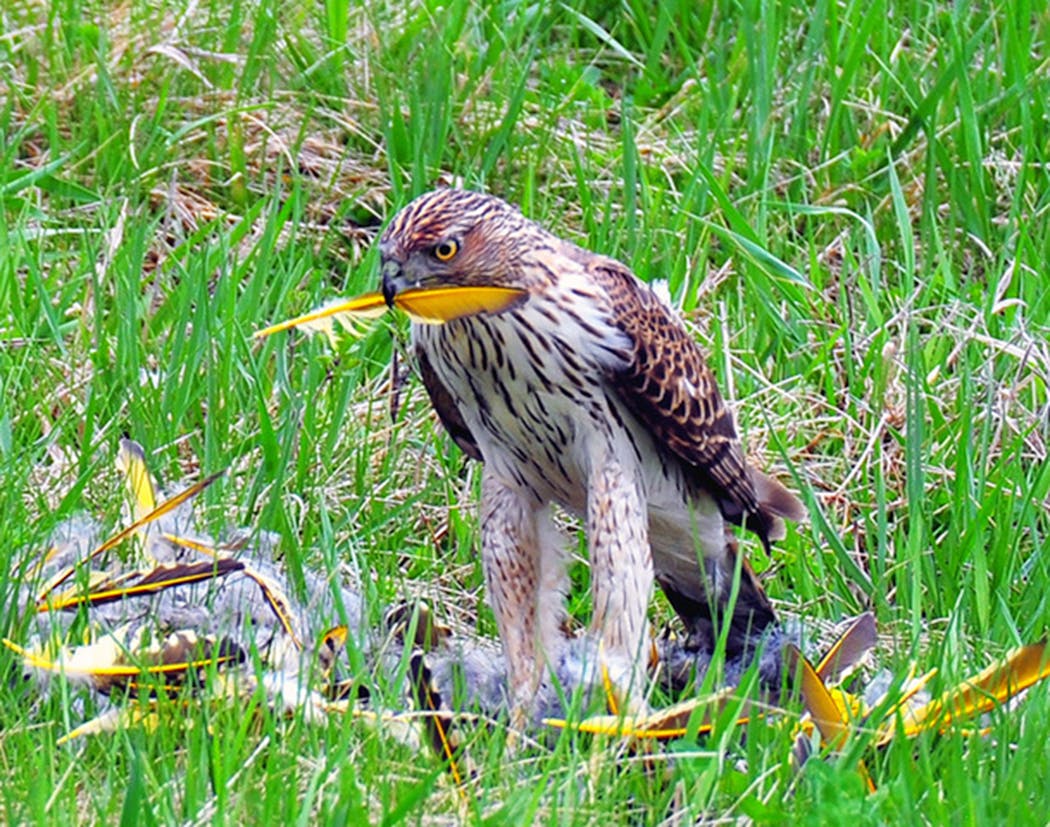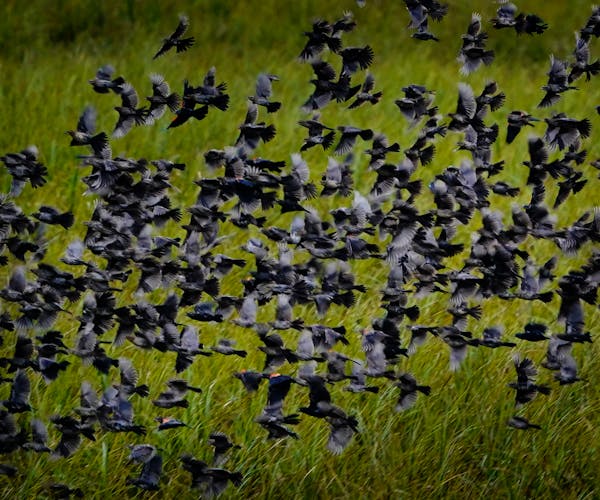Birds are superior creatures when it comes to sight. During 150 million years of natural selection their eyes have adapted to specific needs. There is no one size fits all.
Some years ago on a birding trip to Louisiana I was idling in a road maintenance parking lot while my companions stalked birds in a nearby woods. I was tired.
I perked up when a red-headed woodpecker snapped an insect from the air right in front of me. The bird was circling a building, its hunting ground the air I was staring into.
The woodpecker saw the bug sooner than most humans would and in sharp detail. The bird also had a reaction time allowing it to follow erratic flight.
This woodpecker species is among those bird species that hawk insects, nabbing them on the wing. They can do it because, for one thing, they have very good visual acuity, ability to make out sharp details.
Birds see detail at least twice as well as we do. Blur disappears because bird brains process up to 100 images per second.
We usually can handle no more than half that. Think of it this way: Our sight perception is like slow motion compared with birds' higher processing speed.
The acuity of birds, raptors in particular, has been measured at 20/5 or slightly better. At 20 feet, those birds can perceive fine details that 20/20 vision can see from 5 feet away.
Their binocular vision also is excellent. Bald eagles can see small prey animals clearly at 250 yards. Our brains don't have enough cells in the retina to gather the timely data needed for vision that good.
Large eyes proportional to brain size give raptors the detailed images they require. Some bird species have eyes as large as their brains.
Not all raptor eyes are the same. Red-tailed hawks, scanning ground for prey, trade some binocular vision used for prey at a distance for excellent wide-angle vision. They can scan more ground sharply.
Cooper's hawks have wide binocular fields, facilitating prey detection in closed habitats, like a woods or your landscaped yard.
Kestrels have intermediate-sized binocular and lateral fields. They hunt insects beneath their perch or prey at a distance. They also have very stable vision to help them as they hover while hunting.
There is a saying: "Eyes in the front, the animal hunts. Eyes on the side, the animal hides." Eyes facing forward suggest a predator, a bird (or animal) with the binocular vision and depth perception needed for hunting. Think of cats and owls. Or humans.
Side eye placement allows for greater peripheral or side vision, the better to see danger approaching while you are eating. Animals with eyes to the side suggest prey.
Songbirds with larger eyes begin to sing earlier in the morning, sensitive to lower light intensities.
Migratory songbirds have tight clusters of brain cells highly active only during night vision. Research suggests this means use of stars and other celestial objects for nighttime navigation.
And so on and so on. Natural selection and time have been very good to birds.
(Many sources were used to gather this information, including "Handbook of Bird Biology," Princeton University Press; memphismuseums.org; Wikipedia; the New Times April 25, 1995; Sciencedirect.com; scienceofbirds.com; and Proceedings of the National Academy of Sciences, birdwatchingdaily.com/news/science.)
Lifelong birder Jim Williams can be reached at woodduck38@gmail.com.
Movie Review: A lyrical portrait of childhood in Cabrini-Green with 'We Grown Now'
Judge declines to dismiss lawsuits filed against rapper Travis Scott over deadly Astroworld concert

Summer Movie Guide: Virtually all the movies coming to theaters and streaming from May to Labor Day



